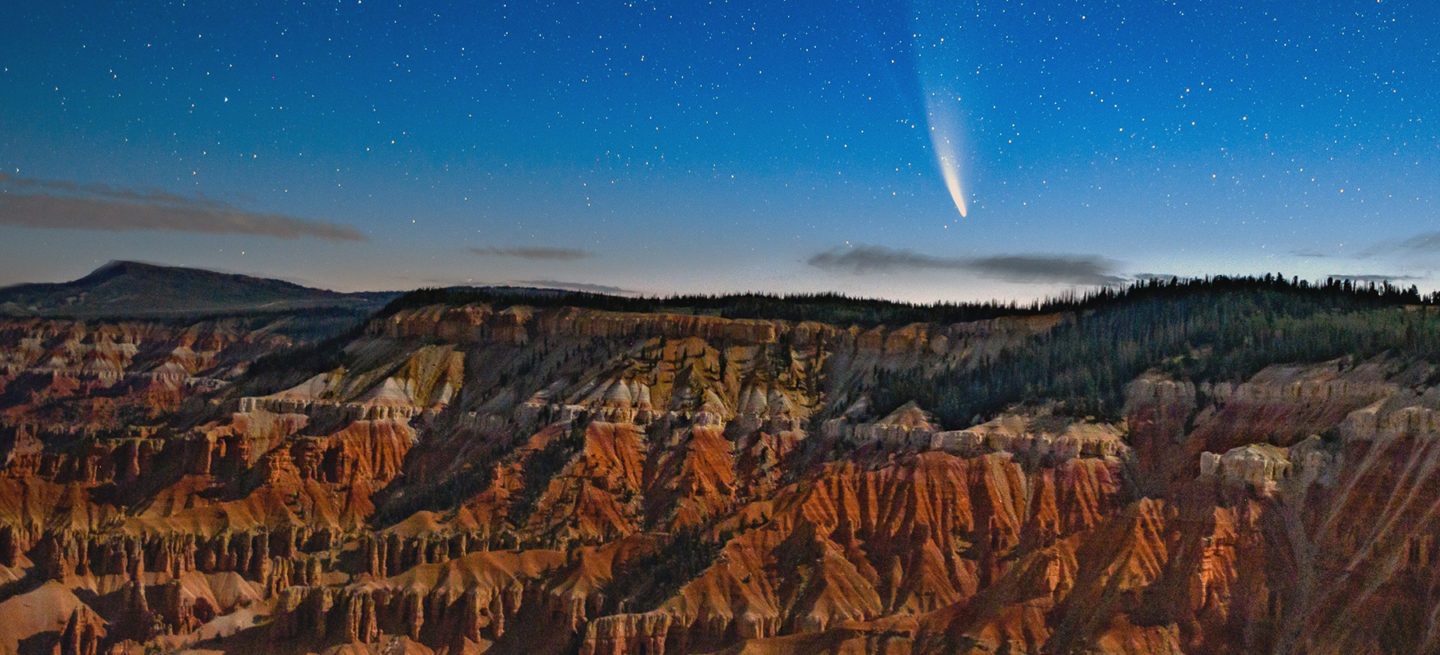The Gift of Night
-Protecting Our Darkest Resource-
“I saw the sky that night in three dimensions- the sky had depth, some stars seemingly close and some much farther away, the Milky Way so well defined it had what astronomers call ‘structure’, that sense of its twisting depths. I remember stars from one horizon to another, making a night sky so plush it still seems like a dream.” –Paul Bogard, The End of Night
There are few places left in the United States where we can experience the stars as Paul Bogard describes them in his featured book, The End of Night. The Southwest happens to be one of those places.
From the Kaibab Plateau’s plains at Pipe Spring in northern Arizona to the viewpoints above 10,000 feet at Cedar Breaks, visitors are treated to an incomparable night sky experience. Seeing the night sky is one thing, understanding and appreciating the beauty within is entirely different.
“Most people don’t think of the night sky as a resource, as something to be conserved, but with increasing use of artificial light, our night skies really are under threat. They are important because they allow us to look backward in time and possibly find answers for our future. Being able to look back 14 billion years into our universe’s past offers us clues to what might come next.” –Matthias Schmitt, Dark Skies Coordinator, Cedar Breaks National Monument
Past project funding at Pipe Spring National Monument saw the construction of a dark sky viewing area interpreting not just the Greco-Roman understanding of the night but also highlighting Paiute Native American interpretations. At Cedar Breaks, seasonal night sky programs delight visitors with high-powered tracking telescopes following astronomical objects throughout the night allowing them to see the moon, planets, and on clear nights even nebulae and galaxies.
With donor support, this project ensures the future of night sky education. Project funding gives the parks the resources they need to bring in expert astronomers and supply them with the tools and equipment required to run an entire season of programs including professional telescopes, binoculars, seasonal staff, and essential educational literature. The team also hosts and supports the annual Southwest Astronomy Festival where Cedar’s prized clear night skies are on full display.
Who has not gazed into the night and felt both connected to the past and hopeful for the future? Your gift gives the gift of night.

